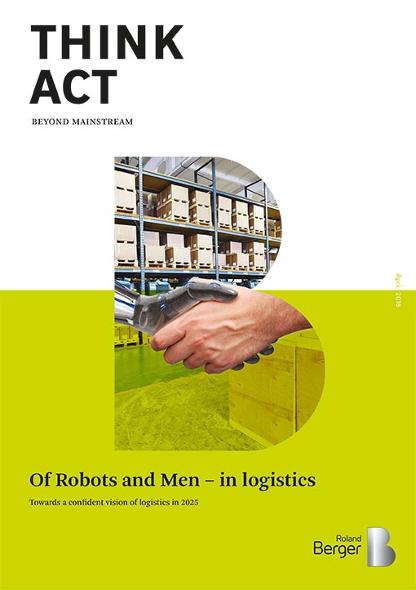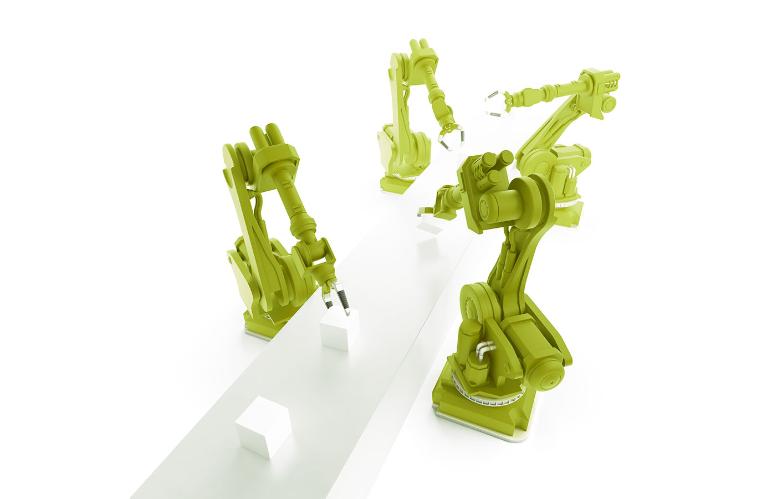Of Robots and Men
![{[downloads[language].preview]}](https://www.rolandberger.com/publications/publication_image/of_robots_and_men_e_download_preview.jpg)
Our new study examines the changes of digitization and robotization that will be faced by the logistics industry over the next 10 years.


Is the age of robotics upon us? Signs point to yes. And far from being limited to heavy manufacturing as in the past, the impacts of this new industrial revolution will be felt primarily in the logistics industry. When will this sea change take place? And how can logistics firms in France and Europe prepare for it? Our new study, Of Robots and Men: Impacts of robotization on the contract logistics industry, examines the changes that will be faced by the logistics industry over the next 10 years.
Pioneered by web giants like Amazon, automated logistics solutions have been progressing at high speed. Key advancements like the ability to operate alongside human operators has increased robotic versatility, and ever-decreasing costs increase robotic competitiveness vis-a-vis their human counterparts by the day. When implemented, we estimate that robotic logistics systems offer cost reductions of 20-40%. At the same time, the cost of human labor continues to rise structurally. Our study found that a tipping point is coming.
By 2020, a large number of robotics solutions costing less than €100,000 will be available, and robotization of the logistics industry will begin in earnest. If not adequately prepared for, the impact on employment will be disastrous: the Eurozone will lose 1.5 million direct jobs over ten years and 3.6 million logistics jobs will be redefined in some way. Unlike previous industrial seismic shifts, such as the mechanization of the automotive industry, the non-exportable nature of logistics means that these jobs cannot be saved by taking advantage of increased productivity to boost exports overseas.
Options for managing the onset of robotic logistics to minimize job loss are complicated and challenging, and governmental support will be key. As small logistic units become more competitive, new roles will be developed. Professions like robot “trainers/integrators,” remote platform administrators, and others will emerge to support the new robotic logistics industry and offset some job loss. Indigenous robotics systems, if they are developed, can be exported to areas ripe for robotization. The risks? A European logistics industry dominated by Japanese, Korean, and Chinese robotics firms.

![{[downloads[language].preview]}](https://www.rolandberger.com/publications/publication_image/of_robots_and_men_e_download_preview.jpg)
Our new study examines the changes of digitization and robotization that will be faced by the logistics industry over the next 10 years.

